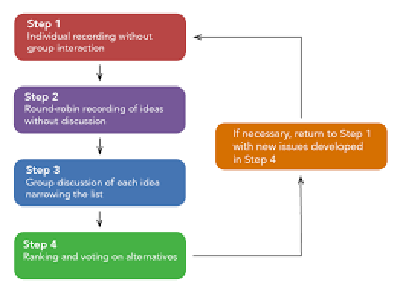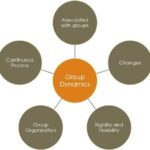The group decision-making process is a collaborative approach in which decisions are made by a group rather than an individual. This process involves discussions, negotiations, and the contributions of multiple members, each offering insights and opinions to guide the final choice.
Characteristics of Group Decision-Making
Unlike individual decision-making, decisions made in a group context often deviate from a purely rational or boundedly rational process. Several factors influence how decisions unfold, including:
-
Order and Reputation of Speakers: The sequence in which individuals speak and their reputations within the group can shape how their suggestions are perceived and acted upon.
-
Rhetorical Skills: The ability of group members to persuade others through communication can affect decision outcomes.
-
Power Dynamics: The distribution of power among group members or coalitions within the group (often referred to as micropolitics) can significantly impact the direction of decisions.
In many cases, decisions emerge from interest-driven negotiations, where each party seeks to maximize its own benefits. However, in large groups and organizations, participation in decision-making may only be worthwhile for those who expect to gain from the process, after accounting for the costs of participation.
The Garbage Can Model
The Garbage Can Model by Cohen, March, and Olsen (1972) offers an alternative view of group decision-making. It suggests that decision-making in organizations is often chaotic and not always structured. In this model:
-
Problems, solutions, participants, and decision opportunities may be decoupled. As a result, decisions can still be made relatively easily as long as problems and decision-makers have not yet emerged.
-
Conversely, when problems are left unresolved over time, they may move to another decision opportunity, sometimes resulting in decisions that appear to emerge more naturally.
-
A favorable outcome occurs when all elements—problems, solutions, participants, and opportunities—align at the same time, allowing for a coherent and effective decision to be made.
Conclusion
In essence, the group decision-making process is influenced by various internal and external factors, including power, communication skills, and negotiation dynamics. It is rarely a straightforward, rational process but instead a complex, often unpredictable interplay of interests and opportunities.
« Back to Glossary Index





![15 Employee Offboarding Templates That Save Hours of HR Time [Free Downloads] 15 Employee Offboarding Templates That Save Hours of HR Time [Free Downloads]](https://i1.wp.com/www.hrcloud.com/hubfs/Header.png?w=150&resize=150,100&ssl=1)
